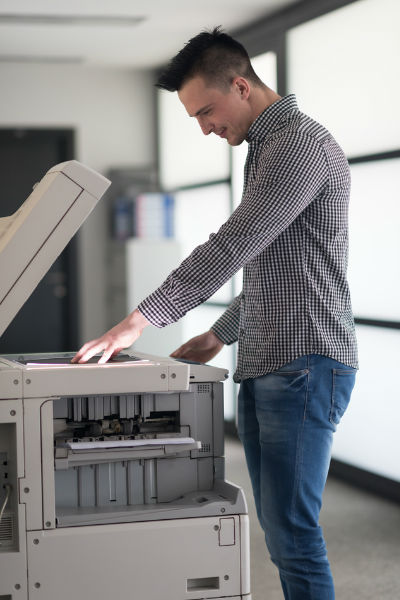Difference Between Business Formal & Business Casual Attire

Over the past 20 years, the definition of professional business attire has evolved significantly. In years past, you would be considered the most trustworthy, competent, and authoritative individual around when wearing formal business attire. With the global rise of social media and an enormous increase in online shopping, this idea has gradually changed.
Today, more and more people are adopting a casual approach to getting ready for their workday or business engagements. Many companies also allow their employees to dress casually, provided the fashion trend offers them the comfort they need. However, maintaining a professional image remains crucial, as it can help you maintain focus and set both the individual and business up for success. But, what are the primary differences between business casual vs. business professional?
Mục Lục
What is Business Casual?
The lack of a universal definition for business casual (also known as casual professional) is one of the reasons why the process of choosing appropriate outfits can be confusing. A business casual dress code varies depending on the company, industry, and part of the world that you’re in. To avoid confusion and doubt, try following these general guidelines, which tend to be safe regardless of your specific situation:
- For men: Appropriate casual attire for men includes slacks or chinos, dark socks, dress shoes, and a button-down shirt. Even if polo shirts, shorts, and/or jeans are acceptable for a job position you are seeking, you should avoid wearing any of them to an interview. For tops, neutral-colored button-up shirts, collared shirts, short-sleeved button-down shirts, or sweaters are acceptable. Bottoms can be semi-formal pants, dark jeans, slacks. For shoes, dark leather, loafers, and tie-ups are typically fine.
- For women: Business casual attire for women usually includes a combination of slacks, skirt, jacket, blouse, sweater, hosiery, and closed-toe shoe. Examples of acceptable tops are turtlenecks, dressy tops, elegant sleeveless shirts, casual dresses, and skirts that split at the knee. Dress pants, knee-length skirts, and pencil-cut skirts are great as bottoms, while pumps, flats, stilettos, close-kitten heels, and open-toed heels shoes are best for footwear, though some companies will allow peep-toe shoes and sandals as well.
Apart from understanding what to wear, you should also know what not to wear for business casual dress. Regardless of how comfortable you feel in them, you should not wear ripped jeans, t-shirts, flip-flops, hooded sweatshirts, sneakers, or outfits with offensive words or images.

What is Business Formal?
Business formal attire (also known as business professional) refers to a crisp dress code, literally: pressed, neat, and never wrinkled. The appearance is mostly for those who work in strict office environments, as well as formal settings like special dinners, award ceremonies, and other important events. Business formal typically follows the below guidelines:
- For men: When it comes to men, formal dress code will usually involve a dark suit and tie. It is important to ensure that you have a matching pair of pants and jacket: wearing a black suit and a light button-down shirt is appropriate. The color and tone of your tie should match your shirt and suit, while Oxford or loafer shoes with clear lines will help complete the look. You can also decide to wear a three-piece suit, where the vest color and material should also match the jacket and slacks. You can accessorize with minimal cuff links, a tie clip, or a belt. However, you should avoid wearing brown shoes whenever you select a black suit.
- For women: The right formal dress code for women includes dark pantsuits, a suit dress, or skirt suit, though there are cases where a long evening dress is considered appropriate formal wear. In terms of shoes, options include heels, formal flats, loafers, or Oxfords. You should also use minimalist jewelry to accessorize. There are a few additional things you should note about formal wear for women in terms of size. Depending on the season, jackets may either be short-sleeved or ¾ length. Skirts should generally sit at or just above the knee, while dress shirts should never be too revealing. Tops should be just the right length, not hanging below the hem of the suit jacket or so short that they show your stomach.
While the options available under the formal dress code may appear limited, you can try out different styles to express your personality. This will go a long way in promoting comfort and boosting your confidence. However, if the function or event requires that you maintain a strictly business dress code, you should ensure you stick to it.

Business Formal vs. Business Casual
Both casual and formal attire can help to project and demonstrate the professional image of an individual and the company they represent. However, it can be difficult to choose which dress code to settle for. Here are a few things you should consider when making this decision:
- Dress appropriately for your workplace: If you are going to work, you should ensure that the attire you choose is in line with your workplace’s dress code. Some workplaces require that employees dress in a specific way. In case you have the room to choose between the two, you may want to consider some of the factors below.
- Consider the occasion: You should also think about the occasion or event you will be attending when choosing the right attire. The outfit you wear for an interview may not necessarily be suitable for an evening business dinner.
- Know your audience: Apart from the occasion, the type of clothes you wear will depend on your audience. Take time to understand your audience and their views regarding formal and casual wear. When doing this, find out the dress code that will allow you to broadcast your message effectively.
- Comfort and productivity: When going to work, you must ensure that the clothes you choose will let you work comfortably and improve your productivity while still looking good. Regardless of the organization’s dress code, you should be confident about your look!
Regardless of whether you prefer business professional or business casual, you should remember that quality is more important than quantity. Whether your outfit is for a job interview or for a workday, people are likely to think highly of you if you dress appropriately.
Final Thoughts on Professional Attire
It is clear that how you dress plays an important role in helping you project a positive image and create a good impression. It’s vital to understand the main differences between business professional vs. business casual to increase your odds of making a solid impression. If dressing yourself appropriately is a challenge (and it can be, depending on the situation), you can also hire an image consultant to help with your grooming and select the best clothes for your body shape.
The London Image Institute is an established and respected name in image consultant training. This means that people who want to improve their personal image can enroll in courses to enhance their personal brand. Those who wish to launch a career as a professional image consultant will also benefit from the rigorous courses taught by experienced faculty. For more information on the programs, you can explore our website or get in touch with us!















![Toni Kroos là ai? [ sự thật về tiểu sử đầy đủ Toni Kroos ]](https://evbn.org/wp-content/uploads/New-Project-6635-1671934592.jpg)


